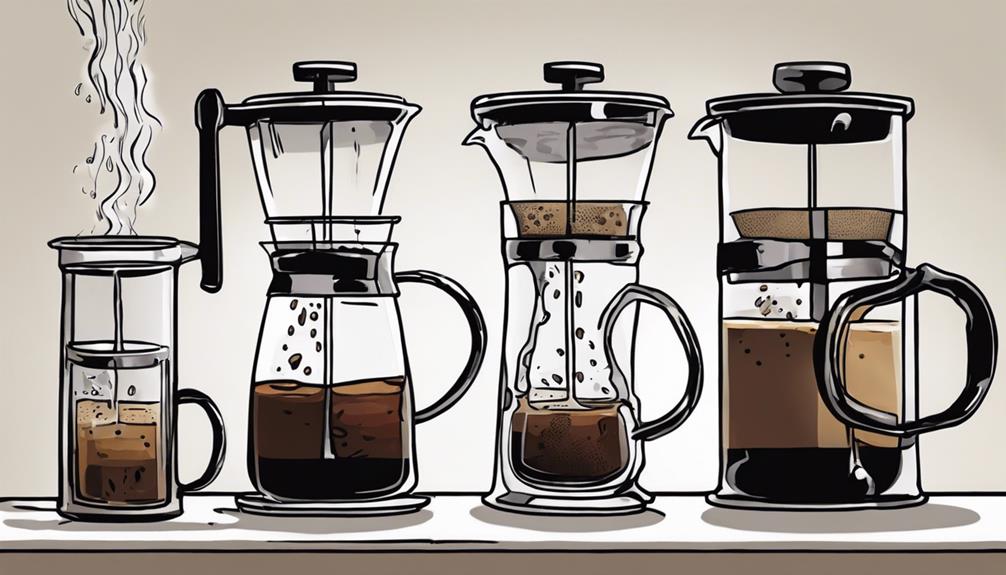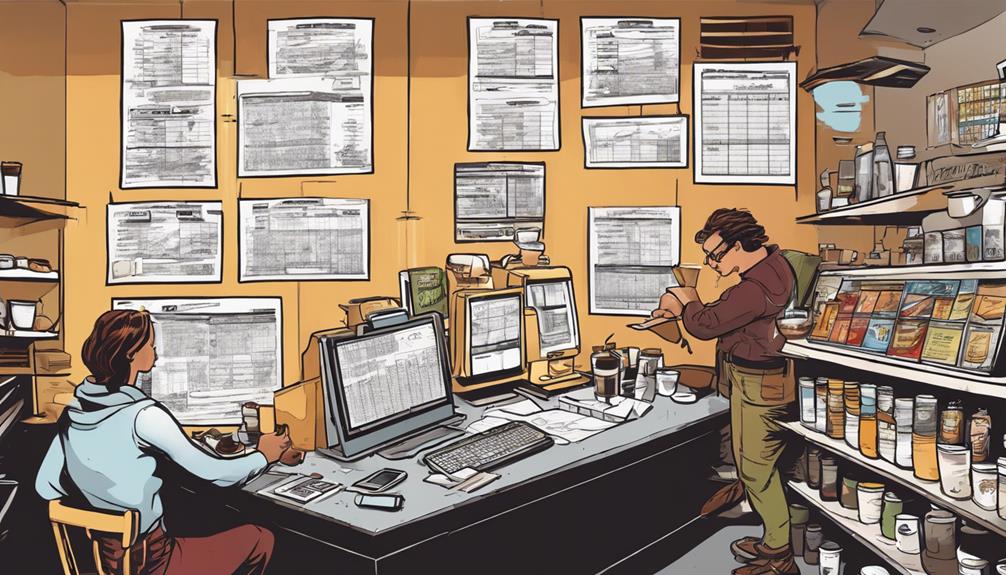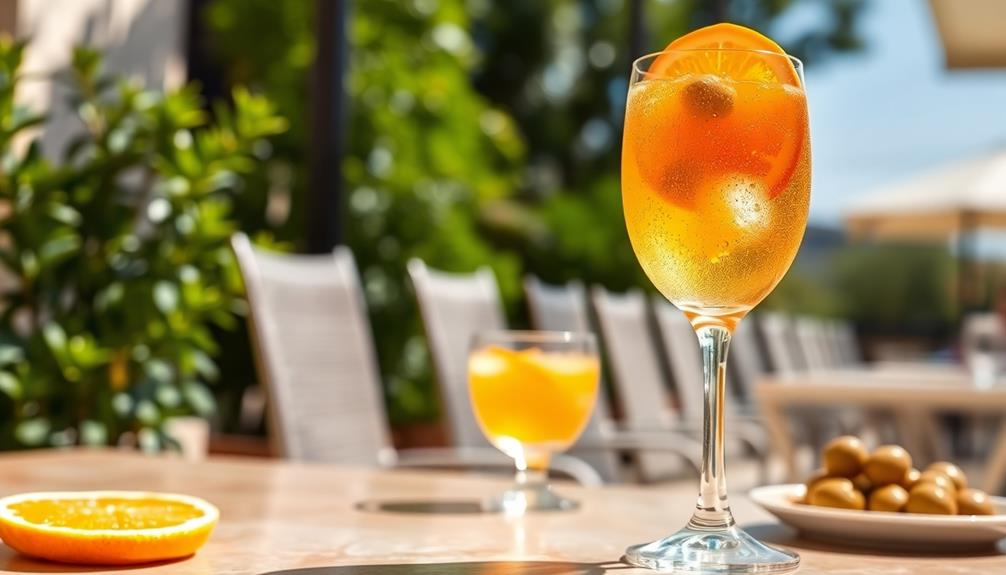To find the best coffee, consider taste profiles such as nutty or fruity notes from various origins. Explore light, medium, or dark roasts for different levels of acidity and body. Try different brewing methods like Pour-Over or French Press for a variety of flavors. Look for ethically sourced beans that support fair treatment and sustainability. Beans grown at high altitudes have unique characteristics and richer tastes. Flavor hints like chocolate, nuts, or fruits can vary based on the roasting technique. Quality assessment ensures high-quality coffee with a focus on harvesting and processing. Sustainable practices enhance the coffee experience. Are you ready to indulge in a multitude of coffee delights?
Key Takeaways
- Consider origin: Central America for nutty flavors, Africa for fruity notes, and Indonesia for earthy tones.
- Select roasting level: light for delicate flavors, medium for balance, dark for bold taste.
- Choose brewing method: Pour-Over for clarity, French Press for richness, Espresso for strength.
- Prioritize ethical sourcing: fair wages, sustainable practices, social responsibility.
- Assess quality: look for specialty coffee graded above 80 points for superior quality.
Flavor Profiles
Different coffee origins provide a variety of distinct flavor profiles based on factors like altitude, latitude, and plant variety. The growing conditions in which coffee is cultivated play a significant role in shaping its flavor.
For instance, Central American coffees are known for their nutty and chocolatey notes, while South American varieties often exhibit chocolatey or fruity flavors. African coffees stand out with their fruity and floral undertones, and Indonesian beans offer earthy or smoky tones.
Elevation is a key factor influencing flavor development, as higher altitudes contribute to enhanced acidity and sweetness in the beans. Additionally, variables such as latitude, rainfall, soil quality, and the specific coffee plant variety all impact the final taste profile of the brewed coffee.
Roasting Techniques

When it comes to roasting techniques, the level of roast plays a pivotal role in the final flavor of your coffee. Light, medium, and dark roasts each offer distinct flavor profiles, from bright acidity to bold richness.
Understanding these roast levels is key to selecting the perfect coffee to suit your taste preferences.
Roasting Levels
Understanding how roasting levels impact the flavor of coffee beans is vital for selecting the best brew to suit your taste preferences. The roasting process plays a pivotal role in determining the characteristics of the final cup of coffee.
Dark roasts, achieved through longer roasting times, result in bold, smoky flavors with reduced acidity. These beans are roasted until they reach a rich, dark color, often carrying a slightly oily surface. Dark roast enthusiasts appreciate the robust and intense profile these beans offer, making them ideal for those who prefer a more pronounced bitterness in their coffee.
While the original flavors of the beans may be overshadowed by the roasting process, dark roasts provide a full-bodied and aromatic experience that appeals to many coffee drinkers seeking a hearty and bold cup of joe.
Flavor Development
Roasting techniques play a crucial role in shaping the flavor profile of coffee beans, revealing their unique characteristics and creating distinct taste experiences. When it comes to flavor development, light roasts are particularly intriguing. These roasts are known for highlighting the natural acidity and delicate flavors of the beans, offering a bright and dynamic drinking experience. On the other hand, medium roasts strike a balance between acidity and body, enhancing the original flavors without overpowering them. Dark roasts, with their bold, smoky, and chocolatey notes, are a result of the extended roasting process.
To better understand the impact of roasting techniques on flavor development, let's explore the differences between light, medium, and dark roasts in the table below:
| Roast Level | Characteristics | Flavor Profile |
|---|---|---|
| Light | High acidity, delicate flavors | Bright, vibrant |
| Medium | Balanced acidity and body | Enhanced original |
| Dark | Bold, smoky, chocolatey notes | Rich, intense |
Coffee Origins

Exploring the origins of coffee can provide valuable insights into the diverse flavor profiles that different regions offer. When choosing your coffee based on its origin, consider the following:
- Central America: Known for nutty and chocolatey notes, coffees from this region are popular for their balanced flavors.
- South America: Offering chocolatey or fruity profiles, South American coffees are versatile and enjoyed by many.
- Africa: With fruity and floral flavors, African coffees are vibrant and often have bright acidity.
- Indonesia: Characterized by earthy or smoky undertones, Indonesian coffees provide a unique and robust taste experience.
Selecting coffee from these major regions can help you pinpoint the flavor notes that align with your preferences.
Each region's distinct climate and soil conditions contribute to the unique characteristics found in their coffees.
Brewing Methods

When it comes to brewing methods, understanding the basics can make a significant difference in your coffee experience. Knowing the ins and outs of various techniques, having the right equipment, and mastering flavor extraction are essential for creating the perfect cup of coffee.
Let's explore Brewing Techniques Overview, Equipment Essentials, and Flavor Extraction Tips to elevate your coffee game.
Brewing Techniques Overview
To craft the perfect cup of coffee, understanding the nuances of various brewing methods is vital. When it comes to brewing techniques, each method plays an essential role in shaping the flavors and aromas of your coffee.
Here's a brief overview of some popular brewing methods:
- Pour-Over: Emphasizes clarity and subtlety of flavors, offering a delicate and nuanced coffee experience.
- French Press: Provides a full-bodied and rich brew, extracting oils and robust flavors from the coffee grounds.
- Espresso: Known for its concentrated and strong flavor profile, topped with a layer of crema that adds a velvety texture.
- AeroPress: A versatile brewing method that produces a clean and smooth cup of coffee, perfect for those who enjoy a milder taste.
Experimenting with different brewing methods allows you to uncover the diverse range of flavors and aromas coffee has to offer.
Equipment Essentials
Understanding the significance of specific equipment for each brewing method is essential in attaining the finest coffee extraction and enhancing your overall coffee experience.
To commence, possessing a grinder is vital for freshly grinding your coffee beans to the proper consistency. Different brewing methods necessitate varying grind sizes; finer grinds are suitable for espresso, while coarser grinds are preferable for French press.
Additionally, investing in a scale, kettle, and a brewing device tailored to your preferred method, such as a Chemex or Aeropress, is pivotal. Filters crafted for your selected brewing method also play a substantial role in the quality of your coffee.
Furthermore, maintaining water temperature between 195-205°F (90-96°C) during brewing guarantees the best extraction. Quality equipment not only enhances your coffee experience but also enables you to comfortably explore diverse brewing techniques at home.
Flavor Extraction Tips
For best flavor extraction in coffee, the brewing method you choose greatly influences the taste profile of your final cup. Different methods like pour-over, French press, espresso, and cold brew each extract flavors uniquely from the coffee grounds.
Here are some tips to enhance your flavor extraction:
- Temperature and Time: Adjust the temperature and brewing time according to the method you're using to achieve the desired flavor intensity.
- Pour-Over Precision: Opt for pour-over brewing for a balanced flavor profile by controlling water flow and extraction rate.
- French Press Fullness: Enjoy a robust, full-bodied coffee with oils and sediments by utilizing the full immersion brewing method of the French press.
- Espresso Intensity: Experience intense flavors quickly with an espresso shot, as high pressure is used for flavor extraction, resulting in a concentrated and bold coffee taste.
Ethical Sourcing

Exploring ethical sourcing in the coffee industry reveals the importance of supporting fair trade practices for the well-being of farmers and workers in the supply chain. When choosing your coffee, look for certifications such as Fair Trade, Rainforest Alliance, or Direct Trade to guarantee that ethical sourcing practices are being followed. By opting for ethically sourced coffee, you are not only enjoying a quality brew but also contributing to sustainable farming practices, environmental conservation, and community development in coffee-growing regions.
To better understand the impact of ethical sourcing, consider the following aspects:
| Aspect | Description | Importance |
|---|---|---|
| Equitable treatment | Fair wages and working conditions for farmers and workers ensure ethical production. | High |
| Environmental conservation | Ethical sourcing promotes sustainable farming methods that protect the environment. | Medium |
| Community development | Supporting ethical practices leads to improved living standards in coffee-growing regions. | High |
Choosing ethically sourced coffee is not just about taste; it's a way to participate in social responsibility efforts that benefit coffee farmers and their communities.
Processing Varieties

When selecting your coffee beans, remember that processing methods like washed, natural, and honey play an essential role in determining the flavors you'll experience in your cup.
Washed processing brings out clean, bright flavors, while natural processing offers sweeter notes and a heavier body.
Honey processing, on the other hand, strikes a balance between brightness and complexity, catering to those seeking a harmonious blend of flavors.
Processing Techniques
Different processing methods such as washed, natural, and honey have a significant impact on the flavor, sweetness, and body of coffee beans. Each technique brings out distinct characteristics in the beans, resulting in a diverse range of coffee profiles.
Here's a breakdown of how different processing methods affect the final product:
- Washed Processing: Known for producing clean, bright flavors with high acidity, washed coffees undergo meticulous washing to remove the fruity mucilage from the beans.
- Natural Processing: This method involves drying the coffee cherries whole, resulting in fruity flavors, a heavy body, and low acidity in the cup.
- Honey Processing: With honey processing, the beans are dried with some or all of the sticky mucilage intact, offering a balanced cup with both brightness and complexity.
- Impact on Flavor: The processing method chosen plays a pivotal role in determining the ultimate flavor profile of the coffee, influencing factors like acidity, sweetness, and body. Selecting the right technique can lead to a more enjoyable coffee experience.
Flavor Impact
Considering the diverse impact of processing methods on flavor, sweetness, and body, coffee enthusiasts can enhance their tasting experience by exploring various processing varieties.
The flavor impact of coffee is heavily influenced by the processing methods employed, such as washed, natural, and honey processing. Washed processing typically yields clean, bright flavors, while natural processing offers sweeter notes and a heavier body. On the other hand, honey processing combines brightness with a complex flavor profile.
By understanding how different processing methods affect the taste of coffee, you can select beans that best suit your flavor preferences. Experimenting with various processing varieties allows you to uncover unique and diverse flavor profiles, expanding your coffee palate.
The next time you're choosing coffee, consider the processing method used to appreciate the full range of flavors coffee has to offer. There are various processing methods for coffee, including natural, washed, and honey-processed. Each method brings out different flavors and characteristics in the coffee beans, so it’s worth exploring the differences. Once you’ve selected your preferred beans, it’s equally important to use the best coffee brewing techniques to extract the most nuanced flavors. Whether it’s pour-over, French press, or espresso, the right brewing method can make all the difference in experiencing the complex and diverse flavors of coffee.
Altitude Influence

At higher elevations, coffee beans develop unique flavors and characteristics due to the impact of environmental factors on their growth. The altitude plays a pivotal role in shaping the acidity and overall flavor profile of the coffee beans.
- Acidity: Coffee grown at higher elevations, typically above 1,200 meters, tends to have more pronounced acidity, adding a vibrant and tangy element to the cup.
- Ripening Process: Altitude influences the rate at which coffee cherries ripen, affecting the development of sugars and organic acids essential for flavor complexity.
- Maturation Speed: Higher elevations lead to a slower maturation process for coffee beans, resulting in concentrated and nuanced flavors that are highly sought after.
- Body of the Coffee: Altitude can impact the body of the coffee, with higher elevations often yielding coffees with a lighter body and delicate mouthfeel, perfect for those who prefer a more subtle coffee experience.
Taste Notes

Exploring the diverse taste notes in coffee can elevate your drinking experience by offering a range of flavors to savor. Understanding how different roasting methods influence the taste profile of coffee is essential in selecting the perfect brew that suits your preferences. Here are some key taste notes commonly found in coffee:
| Taste Notes | Description | Roasting Method |
|---|---|---|
| Chocolate & Caramel | Rich and smooth flavors with a hint of sweetness, often brought out through medium roasting. | Medium Roast |
| Nuts & Spice | Earthy and warm notes that add depth to the brew, more pronounced in darker roasts. | Dark Roast |
| Fruit | Sweet and vibrant flavors, commonly present in naturally processed coffees. | Light Roast |
| Citrus & Floral | Invigorating and aromatic qualities, typically found in washed coffees with a light roast. | Light Roast |
Quality Assessment

Evaluating the quality of coffee involves examining various factors that impact its flavor profile and overall excellence. When gauging the quality of coffee beans, consider the following:
- Specialty Grading: Specialty coffee is graded above 80 points in sensory evaluations, indicating superior quality.
- Influential Factors: Factors like harvesting, processing, altitude, and varietals greatly influence the quality of coffee beans.
- Altitude Importance: Higher altitude coffee plantations often produce beans with refined acidity and enhanced sweetness due to the concentration of sugars and organic acids.
- Diverse Experiences: Exploring specialty coffee allows for a diverse range of flavors and experiences for coffee enthusiasts.
Understanding these aspects can help you appreciate the intricacies of coffee quality and make informed decisions when selecting your brew. In addition, understanding the different coffee bean varieties, roast levels, and brewing methods can also enhance your overall coffee experience. By knowing what to look for in a quality coffee, you can ensure that you are getting the best flavor and aroma from your brew. This knowledge can also help you save money in the long run by making your own high-quality coffee at home, potentially winning against coffee shop prices.
Whether you prefer a bright and citrusy cup or a rich and chocolatey one, the quality evaluation of coffee beans plays a pivotal role in delivering a delightful drinking experience.
Sustainable Practices

Considering the significance of sustainable practices in coffee production, it's crucial to understand the impact of ethical sourcing and environmentally friendly farming methods. Sustainable production involves fair trade agreements, environmentally friendly farming methods, and support for local communities. Initiatives like Rainforest Alliance and Fair Trade certification guarantee ethical sourcing and sustainable practices in choosing coffee.
Sustainable coffee farming focuses on biodiversity conservation, soil health, and reducing water usage and waste. By choosing sustainably sourced coffee, you can support farmers, promote environmental stewardship, and enjoy high-quality coffee. These practices also help preserve ecosystems, maintain soil fertility, and contribute to long-term resilience in the coffee industry.
When selecting your coffee, look for certifications and labels that indicate sustainable practices to make a positive impact with your purchase. Your choice can make a difference in promoting a more sustainable coffee industry.
Frequently Asked Questions
Which Coffee Type Is Considered the Best Quality?
For the best quality coffee, opt for Arabica beans. Grown at high altitudes, they boast a smoother taste and higher grade status. Factors like growing conditions and roasting techniques impact their quality, ensuring a superior coffee experience.
What Are the Best Coffees to Buy?
To get the best coffees, opt for specialty grade arabica beans, freshly roasted from ethical sources. Choose whole beans for maximum flavor. Experiment with different roast levels for your preferred taste. Explore various brands to find your perfect match.
Which Type of Coffee to Choose?
For a smooth taste, go for Arabica beans grown in high altitudes. If you prefer a stronger, more bitter flavor, opt for Robusta beans from lower altitudes. Choose local, ethical brands, and always pick whole beans for freshness.
Which Coffee Beans Are the Highest Quality?
When looking for the highest quality coffee beans, opt for Arabica beans. Grown at higher altitudes, they offer a smoother taste with diverse flavors. Factors like origin, processing, and roasting impact their quality. Choose freshly roasted and ground beans for the best experience.
Conclusion
In choosing the best coffee, consider:
- Flavor profiles
- Roasting techniques
- Origins
- Brewing methods
- Ethical sourcing
- Altitude influence
- Taste notes
- Quality assessment
- Sustainable practices
By exploring these factors, you can find the perfect cup that suits your taste preferences and values.
Remember to prioritize what matters most to you and enjoy the rich, flavorful experience that comes with each sip of your carefully selected brew.
Choose wisely and savor every moment of your coffee journey!









